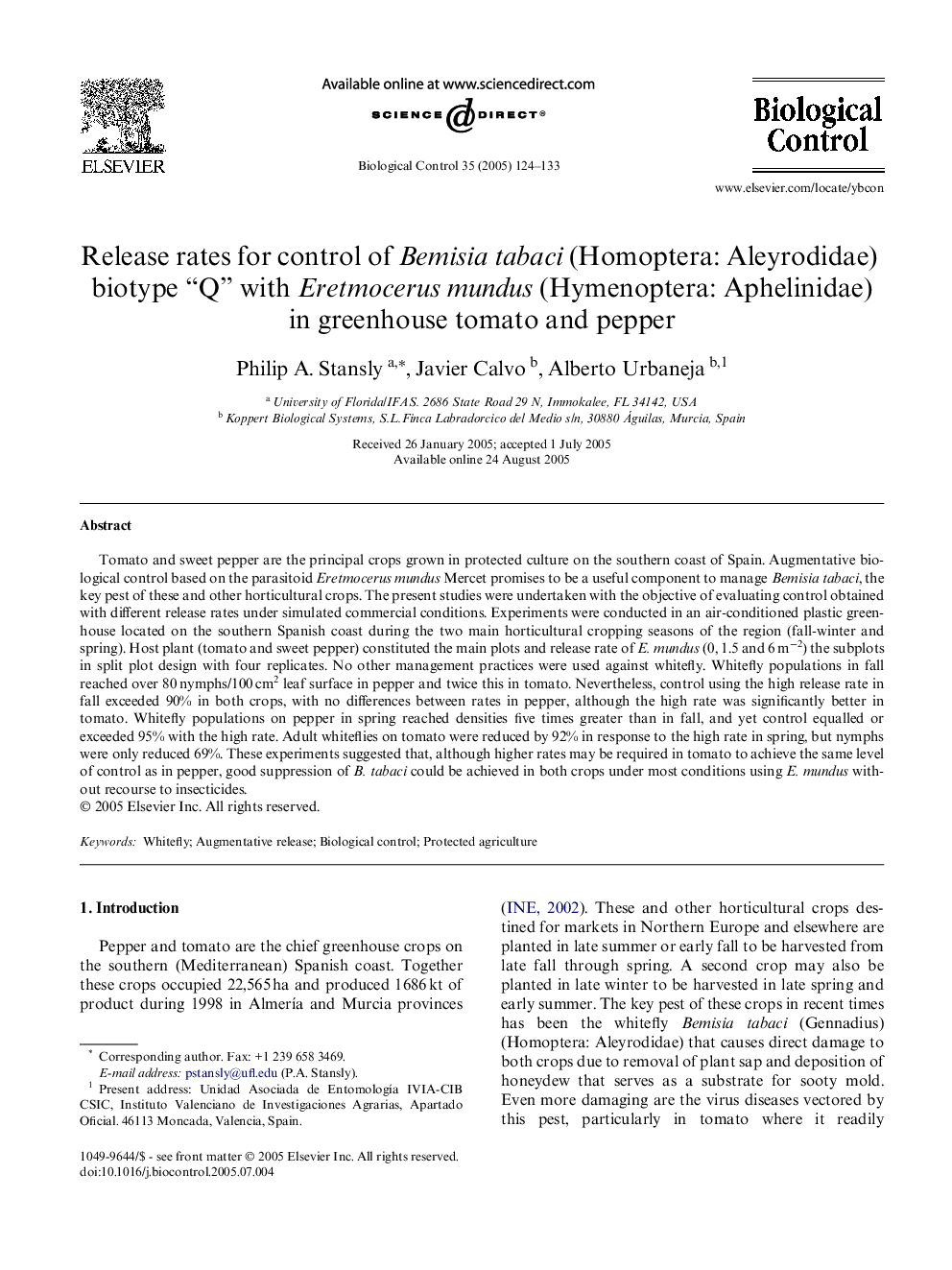| Article ID | Journal | Published Year | Pages | File Type |
|---|---|---|---|---|
| 9471997 | Biological Control | 2005 | 10 Pages |
Abstract
Tomato and sweet pepper are the principal crops grown in protected culture on the southern coast of Spain. Augmentative biological control based on the parasitoid Eretmocerus mundus Mercet promises to be a useful component to manage Bemisia tabaci, the key pest of these and other horticultural crops. The present studies were undertaken with the objective of evaluating control obtained with different release rates under simulated commercial conditions. Experiments were conducted in an air-conditioned plastic greenhouse located on the southern Spanish coast during the two main horticultural cropping seasons of the region (fall-winter and spring). Host plant (tomato and sweet pepper) constituted the main plots and release rate of E. mundus (0, 1.5 and 6Â mâ2) the subplots in split plot design with four replicates. No other management practices were used against whitefly. Whitefly populations in fall reached over 80Â nymphs/100Â cm2 leaf surface in pepper and twice this in tomato. Nevertheless, control using the high release rate in fall exceeded 90% in both crops, with no differences between rates in pepper, although the high rate was significantly better in tomato. Whitefly populations on pepper in spring reached densities five times greater than in fall, and yet control equalled or exceeded 95% with the high rate. Adult whiteflies on tomato were reduced by 92% in response to the high rate in spring, but nymphs were only reduced 69%. These experiments suggested that, although higher rates may be required in tomato to achieve the same level of control as in pepper, good suppression of B. tabaci could be achieved in both crops under most conditions using E. mundus without recourse to insecticides.
Related Topics
Life Sciences
Agricultural and Biological Sciences
Agronomy and Crop Science
Authors
Philip A. Stansly, Javier Calvo, Alberto Urbaneja,
